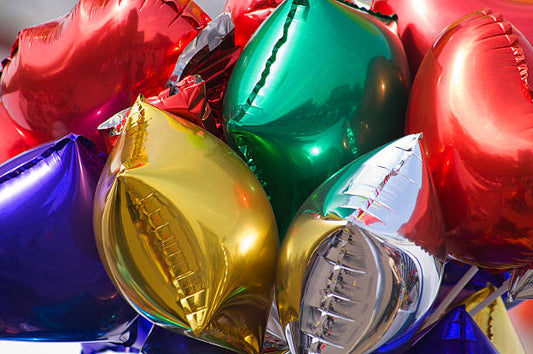Have you ever wondered what happens when you rub balloons together? It might sound like a simple and playful activity, but there's actually a fascinating scientific phenomenon behind it. In this article, we will unravel the electrifying secrets of rubbing balloons together and explore the captivating effects it produces. Get ready to embark on an exciting journey of static electricity, negative charges, and a whole lot of fun!
Unleashing the Power of Static Electricity
Static electricity is a type of electrical charge that stays in one place. When you rub two balloons together, a fascinating phenomenon occurs. The friction between the balloons and the rubbing motion causes an exchange of electrons. Electrons are tiny particles with a negative charge that orbit the nucleus of an atom. As the rubbing action transfers electrons from one balloon to another, it leads to a build-up of static electricity.
The Negative Charge Delight
Once the balloons have been rubbed together, they become charged with static electricity. This charge is usually negative. But what does it mean to have a negative charge? Imagine it like this: opposite charges attract, and similar charges repel. So, when the balloons are charged with the same negative charge, they repel each other.
Fun with Repelling Balloons
The repelling effect between the charged balloons is what makes this experiment so fascinating. When you bring two negatively charged balloons close to each other, you'll notice that they push each other away. It's as if there's an invisible force field surrounding them. This repulsion occurs because the similar negative charges on the balloons are trying to move as far away from each other as possible. It's like two magnets with the same poles facing each other—they simply can't come together.
Electrifying Interactions Beyond Balloons
Apart from exploring the interaction between two rubbed balloons, you can experiment with other surfaces too. Let's uncover the electrifying effects of rubbing balloons on different materials.
Rubbing Balloons on Your Hair:
Ever noticed how balloons can stick to your hair after rubbing them against it? It's a classic party trick that never fails to amuse. When you rub a balloon on your hair, the friction causes an electron exchange. As a result, the balloon becomes negatively charged, while your hair carries a positive charge. The opposite charges attract each other, causing the balloon to stick to your hair. This simple experiment demonstrates the power of static electricity.
Rubbing Balloons on a Sweater:
A sweater made of certain materials, like wool or synthetic fibers, can generate static electricity when rubbed against a balloon. As you rub the balloon on your sweater, it gathers a negative charge. When you bring it close to small pieces of paper or even your arm hair, you might observe the static electricity causing them to move towards the balloon. It's a playful way to witness the effects of static electricity.
Rubbing Balloons on Metal:
Metal objects can also interact with statically charged balloons. When you rub a balloon against metal, the metal object gains a temporary charge. If you bring the charged balloon close to small metal objects, like paper clips, they might be attracted to or even stick to the balloon. This phenomenon occurs due to the transfer of electrons and the resulting charge imbalance.
Conclusion
On conclusion, rubbing balloons together is not only a fun and playful activity but also a captivating demonstration of the principles of static electricity. Through the exchange of electrons caused by friction, balloons become charged with static electricity, resulting in intriguing effects such as repulsion between similarly charged balloons. This phenomenon opens up a world of possibilities for exploration and experimentation, allowing us to understand the power of electric charges in a hands-on and engaging way.
Adittional Articles:
- Visit Why Do Balloons Float? to unravel the secrets behind this captivating phenomenon.
-
Discover the surprising transformations and unique characteristics that balloons exhibit under extreme cold conditions. For more intriguing insights, visit Balloons in the Freezer.







